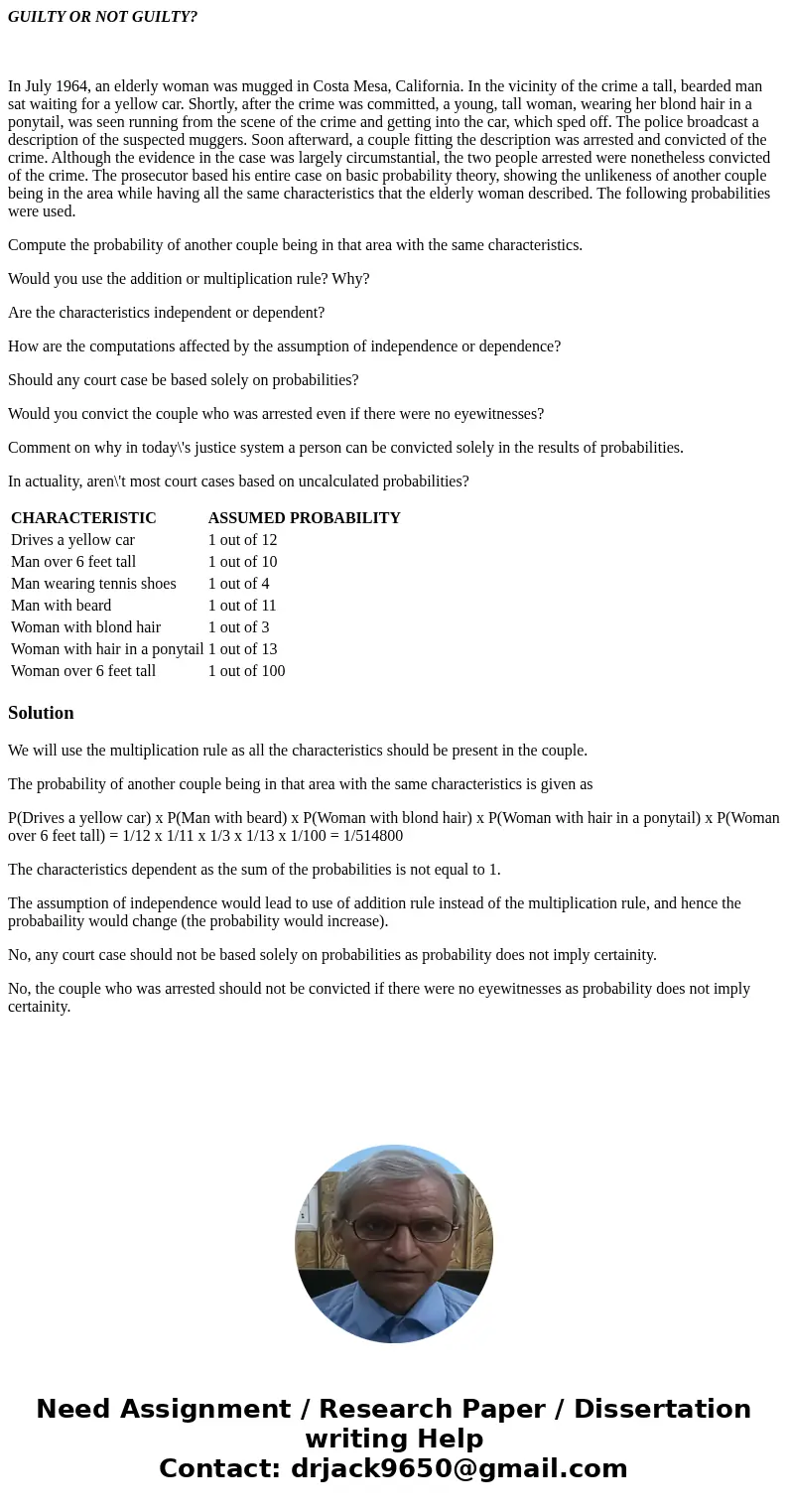GUILTY OR NOT GUILTY In July 1964 an elderly woman was mugge
GUILTY OR NOT GUILTY?
In July 1964, an elderly woman was mugged in Costa Mesa, California. In the vicinity of the crime a tall, bearded man sat waiting for a yellow car. Shortly, after the crime was committed, a young, tall woman, wearing her blond hair in a ponytail, was seen running from the scene of the crime and getting into the car, which sped off. The police broadcast a description of the suspected muggers. Soon afterward, a couple fitting the description was arrested and convicted of the crime. Although the evidence in the case was largely circumstantial, the two people arrested were nonetheless convicted of the crime. The prosecutor based his entire case on basic probability theory, showing the unlikeness of another couple being in the area while having all the same characteristics that the elderly woman described. The following probabilities were used.
Compute the probability of another couple being in that area with the same characteristics.
Would you use the addition or multiplication rule? Why?
Are the characteristics independent or dependent?
How are the computations affected by the assumption of independence or dependence?
Should any court case be based solely on probabilities?
Would you convict the couple who was arrested even if there were no eyewitnesses?
Comment on why in today\'s justice system a person can be convicted solely in the results of probabilities.
In actuality, aren\'t most court cases based on uncalculated probabilities?
| CHARACTERISTIC | ASSUMED PROBABILITY |
| Drives a yellow car | 1 out of 12 |
| Man over 6 feet tall | 1 out of 10 |
| Man wearing tennis shoes | 1 out of 4 |
| Man with beard | 1 out of 11 |
| Woman with blond hair | 1 out of 3 |
| Woman with hair in a ponytail | 1 out of 13 |
| Woman over 6 feet tall | 1 out of 100 |
Solution
We will use the multiplication rule as all the characteristics should be present in the couple.
The probability of another couple being in that area with the same characteristics is given as
P(Drives a yellow car) x P(Man with beard) x P(Woman with blond hair) x P(Woman with hair in a ponytail) x P(Woman over 6 feet tall) = 1/12 x 1/11 x 1/3 x 1/13 x 1/100 = 1/514800
The characteristics dependent as the sum of the probabilities is not equal to 1.
The assumption of independence would lead to use of addition rule instead of the multiplication rule, and hence the probabaility would change (the probability would increase).
No, any court case should not be based solely on probabilities as probability does not imply certainity.
No, the couple who was arrested should not be convicted if there were no eyewitnesses as probability does not imply certainity.

 Homework Sourse
Homework Sourse